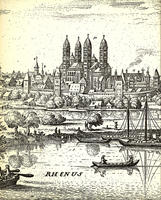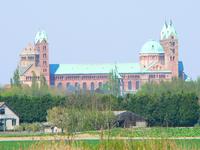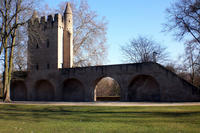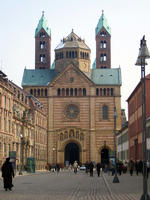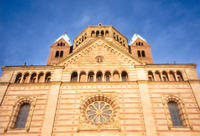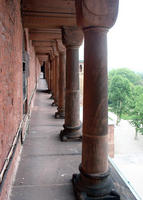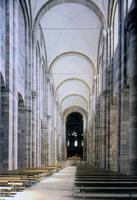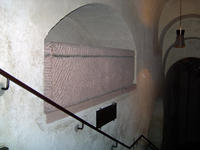You are in: Europe -> Germany -> Speyer Cathedral, and traditional search or Image Gallery will yield results of this site only
Speyer Cathedral
| Site number: | 168 |
|
| Type of site: | Cultural | |
| Date: | 1030 | |
| Date of Inscription: | 1981 | |
| Location: | Europe, Germany, State of Rhineland-Palatinate (Rheinland-Pfalz) | |
Up to 75 images are shown here. Click on each for more details or on Image Gallery for more images.
| Description: | Founded by Conrad II in 1030 Speyer Cathedral was and remodeled at the end of the 11th century; now it stands as a basilica with four towers and two domes. This is one of the most significant Romanesque monuments that has preserved from the time of the Holy Roman Empire. The cathedral acted as a burial place of German emperors for just about 300 years. --WHMNet paraphrase from the description at WHC Site, where additional information is available. | |
| The Speyer Cathedral (officially: Mariendom (Cathedral of St. Mary and St. Steven), but more often called Kaiserdom zu Speyer (Imperial Cathedral of Speyer) is a very large and imposing basilica of red sandstone in Speyer, Germany. It is the city's most important landmark. With the Abbey of Cluny in ruins, the Speyer Cathedral remains the largest Romanesque church to this very day. Built at the instigation of emperor Conrad II in 1030-1061 as his choice of final resting place, it became the burial site of 7 more German emperors and kings as well as some of their wives and a number of bishops. Like other cathedrals built at the instigation of emperors around that time in Germany, e.g. Worms, Mainz, it acquired the name Kaiserdom (Imperial Cathedral). In 1981, the cathedral was added to the UNESCO World Heritage List of culturally important sites. The building has preserved its original style making it one of the noblest examples of pure and clear Romanesque architecture now extant. A distinctive feature is the colonnaded gallery that goes around the entire building, just below the roofline. The imposing triple-aisled vaulted basilica is the culmination of a design which was extremely influential in the subsequent development of Romanesque architecture during the 11th and 12th centuries. The cathedral’s hallmarks are the balanced distribution of its east and west ends and the symmetrical arrangement of four towers at the corners of the body of the structure formed by the nave and transept. The Speyer Cathedral has a checkered history, its disasters culminating in 1689, when the soldiers of Louis XIV burned it to the bare walls. Restored in 1772-1784 and provided with a vestibule and façade, it was again desecrated by the French in 1794; but in 1846-1853 it was once more thoroughly restored and adorned in the interior with frescoes at the expense of king Ludwig I of Bavaria. The graves of the emperors and kings were originally placed in the central aisle in front of the altar. In the course of the centuries knowledge of the exact location was lost. In a big excavation campaign in 1900 the graves were discovered and opened. Some of the contents, e. g. clothing, can be seen at the Historical Museum of the Palatinate near the cathedral. The restored coffins of the emperors and kings and some of their wives were relocated into a newly constructed crypt open to the public under the main altar in 1906. --Wikipedia. Text is available under the Creative Commons Attribution-ShareAlike License. | ||
| Source: | http://whc.unesco.org/en/list/168 | |
| Source2: | http://whc.unesco.org/en/list/168/video | |
| Reference: | 1. UNESCO World Heritage Center, Site Page. | |







